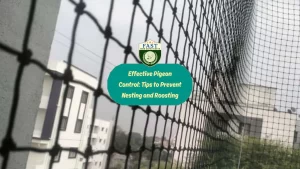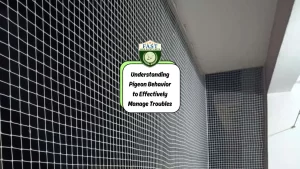Pigeons, often referred to as “rock doves,” are ubiquitous urban birds known for their adaptability and unique behaviors. Understanding pigeon behavior, including their habits and nesting patterns, is essential for effective management and control. In this article, we’ll delve into the fascinating world of pigeons, exploring their behaviors and providing insights into their nesting habits.

1. The Urban Pigeon: Adaptation to Human Environments
Pigeons have thrived in urban environments worldwide, thanks to their remarkable ability to adapt to human habitats. Explore how pigeons have evolved to coexist with humans and exploit urban landscapes for food, shelter, and nesting sites.
2. Pigeon Behavior: Foraging and Feeding Habits
Learn about the foraging behavior of pigeons, including their dietary preferences, feeding strategies, and interactions with other birds and wildlife. Discover how pigeons search for food in urban settings and adapt their feeding habits to environmental changes.
3. Social Dynamics: Pigeon Flocking and Communication
Pigeons exhibit complex social behaviors, including flocking and communication, which play crucial roles in their survival and reproduction. Explore the dynamics of pigeon flocks, communication signals, and hierarchical structures within pigeon communities.
4. Nesting Behavior: Selection of Nest Sites and Construction
Gain insights into pigeon nesting behavior, including the selection of nest sites and the construction of nests. Learn about the factors that influence nest site choice, such as availability of shelter, proximity to food sources, and perceived safety from predators.
5. Reproductive Cycle: Egg Laying, Incubation, and Fledging
Follow the reproductive cycle of pigeons, from courtship and mating to egg laying, incubation, and fledging. Understand the roles of male and female pigeons in the nesting process and the strategies they employ to ensure the survival of their offspring.
6. Challenges of Pigeon Nesting: Urban Environments and Human Interactions
Examine the challenges that pigeons face in urban environments, including competition for resources, exposure to pollutants, and conflicts with humans. Explore the impact of human interventions, such as nest removal and deterrent measures, on pigeon nesting behaviors.
7. Management Strategies: Balancing Conservation and Control
Consider management strategies for addressing pigeon-related issues in urban areas while balancing conservation efforts and humane control measures. Explore approaches such as habitat modification, exclusion techniques, and public education campaigns to mitigate conflicts and promote coexistence.
8. Future Perspectives: Research Directions and Conservation Efforts
Look ahead to future research directions and conservation efforts aimed at better understanding pigeon behavior and improving management strategies. Explore emerging technologies and interdisciplinary approaches for studying pigeons and their interactions with urban environments.
Conclusion
Understanding pigeon behavior provides valuable insights into their habits and nesting patterns, enabling us to develop effective management strategies for coexisting with these urban birds. By exploring the complexities of pigeon behavior and embracing innovative solutions, we can foster harmonious relationships between pigeons, humans, and the urban environment.






